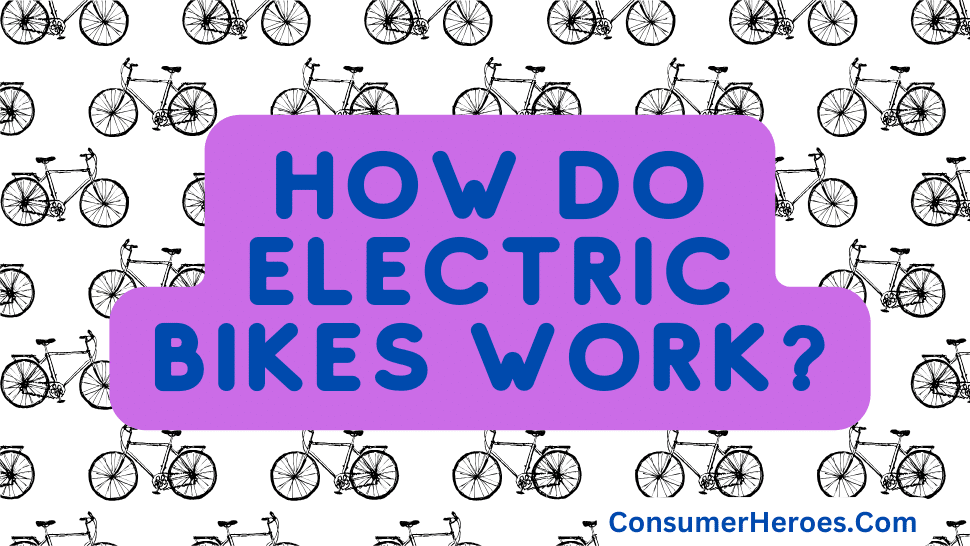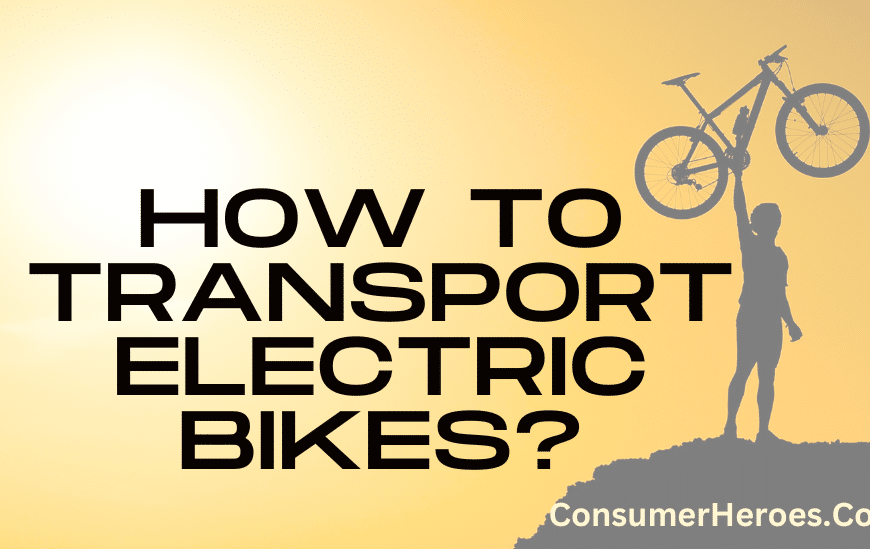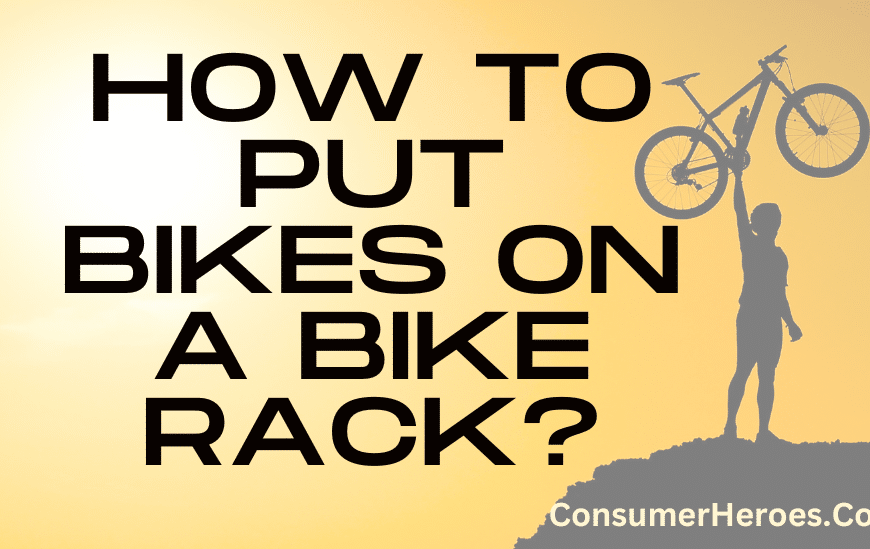E-bikes have become increasingly popular in recent years as a more sustainable and efficient mode of transportation. However, many people are still unsure about how fast e-bikes can go. The speed of an e-bike can vary depending on a few factors, including the type of e-bike, the motor, and the local laws and regulations.
Generally, e-bikes can reach speeds of up to 28 mph (45 km/h), but this can vary depending on the model and the motor. Some e-bikes have a pedal-assist system, which means that the motor only kicks in when the rider is pedaling. Other e-bikes have a throttle, which allows the rider to control the speed with a twist of the wrist. It’s important to note that the maximum speed of an e-bike may be limited by local laws and regulations, so it’s always a good idea to check the rules in your area before hitting the road.
Understanding E-Bikes
E-bikes, or electric bikes, are becoming increasingly popular as a form of transportation due to their convenience and eco-friendliness. They are similar to traditional bicycles but come equipped with an electric motor and battery that assist the rider in pedaling.
How do they work?
E-bikes work by providing an electric boost to the rider’s pedaling power. The motor is activated when the rider starts pedaling, and the amount of assistance provided can be adjusted through a control panel on the handlebars. The battery powers the motor and can be recharged using a standard electrical outlet.
Types of E-Bikes
There are several types of e-bikes available, each with its own unique features and benefits. Some common types include:
- City e-bikes: Designed for urban commuting, these bikes are lightweight and easy to maneuver in traffic.
- Mountain e-bikes: Built for off-road adventures, these bikes have a more powerful motor and rugged tires for navigating rough terrain.
- Folding e-bikes: Ideal for those with limited storage space, these bikes can be easily folded and stored in a closet or trunk.
Speed and Range
The speed and range of e-bikes can vary depending on several factors, including the size of the motor, the size of the battery, and the weight of the rider. In general, most e-bikes have a top speed of around 20-28 mph and a range of 20-50 miles per charge.
It’s important to note that e-bikes are classified as bicycles and are subject to the same laws and regulations as traditional bikes. In most areas, riders are required to wear a helmet and follow the same traffic laws as motor vehicles.
Overall, e-bikes offer a convenient and eco-friendly alternative to traditional transportation methods. With a better understanding of how they work and the different types available, riders can choose the best e-bike for their needs and enjoy the benefits of electric-assisted cycling.
Speed Factors
When it comes to determining how fast an e-bike can go, there are several factors that come into play. Here are some of the key speed factors to keep in mind:
Motor Power
One of the biggest factors that determines the speed of an e-bike is the power of the motor. The more powerful the motor, the faster the bike can go. Most e-bikes have motors that range from 250 watts to 750 watts, with some models even going up to 1,000 watts or more. Generally, the higher the wattage, the faster the bike can go.
Battery Capacity
The battery capacity of an e-bike also plays a role in how fast it can go. A larger battery capacity means that the bike can maintain its top speed for longer periods of time. This is because the motor is able to draw more power from the battery, which allows it to maintain a higher speed for longer.
Weight
The weight of the e-bike and rider can also impact its speed. A heavier bike will generally be slower than a lighter one, as it requires more power from the motor to maintain the same speed. Additionally, a heavier rider can also impact the speed of the bike.
Terrain
The terrain that the e-bike is being ridden on can also impact its speed. Riding on flat, smooth terrain will allow the bike to go faster than if it were being ridden on hilly or rough terrain. This is because the motor has to work harder to maintain speed on hills and rough terrain.
Riding Style
Finally, the riding style of the e-bike rider can impact its speed. Riding aggressively and pushing the bike to its limits will result in higher speeds, while riding more conservatively will result in lower speeds. Additionally, using the bike’s pedal assist mode can also impact its speed, as it provides additional power to the motor.
Legal Speed Limits
E-bikes are subject to legal speed limits, just like traditional bicycles. The maximum speed at which an e-bike can legally operate varies by state and country. It is important to be aware of the local laws and regulations before riding an e-bike.
In the United States, the federal law defines an e-bike as a bicycle that has a motor with a maximum power output of 750 watts and can travel at a maximum speed of 20 mph on level ground. However, individual states may have their own laws regarding e-bikes. For example, California allows e-bikes to travel up to 28 mph on certain roads, while New York limits e-bikes to 20 mph.
In Europe, the maximum speed of an e-bike is limited to 25 km/h (15.5 mph) by default. However, some countries have their own regulations. For example, in Germany, e-bikes are allowed to travel up to 45 km/h (28 mph) if they meet certain requirements such as having a special license plate and insurance.
It is important to note that exceeding the legal speed limit can result in fines and other penalties. Additionally, riding an e-bike at high speeds can be dangerous and increase the risk of accidents. Riders should always follow the rules of the road and ride at a safe and legal speed.
Speed Variations Among E-Bike Types
E-bikes, also known as electric bicycles, are becoming increasingly popular as a mode of transportation. One of the most significant advantages of e-bikes is their speed. However, the speed of an e-bike can vary depending on the type.
Mountain E-Bikes
Mountain e-bikes are designed for off-road cycling and are equipped with powerful motors and large batteries. These bikes are built to handle rough terrain, steep inclines, and challenging obstacles. Mountain e-bikes can reach speeds of up to 28 mph (45 km/h) with pedal assistance.
Road E-Bikes
Road e-bikes are designed for speed and efficiency on paved roads. They are equipped with lightweight frames, narrow tires, and aerodynamic features. Road e-bikes can reach speeds of up to 28 mph (45 km/h) with pedal assistance.
Hybrid E-Bikes
Hybrid e-bikes are a combination of mountain and road e-bikes. They are designed for versatility and can be used for commuting, recreational riding, and light off-road cycling. Hybrid e-bikes can reach speeds of up to 20 mph (32 km/h) with pedal assistance.
In summary, the speed of an e-bike can vary depending on the type. Mountain and road e-bikes can reach speeds of up to 28 mph (45 km/h) with pedal assistance, while hybrid e-bikes can reach speeds of up to 20 mph (32 km/h).
Battery and Motor Influence
The battery and motor are two of the most important components of an e-bike. They work together to determine how fast an e-bike can go.
Battery
The battery is what powers the motor. The more powerful the battery, the faster the e-bike can go. Batteries are typically measured in volts (V) and ampere-hours (Ah). The higher the voltage and the more ampere-hours a battery has, the more powerful it is.
However, it’s important to note that a more powerful battery also means a heavier battery. This can affect the overall weight of the e-bike and make it harder to pedal without assistance.
Motor
The motor is what drives the e-bike. The power of the motor is measured in watts (W). The higher the wattage, the more powerful the motor and the faster the e-bike can go.
There are two types of motors – hub motors and mid-drive motors. Hub motors are located in the wheel hub and are generally less powerful than mid-drive motors. Mid-drive motors are located near the bike’s bottom bracket and provide more power and better handling.
The motor and battery work together to determine the speed of the e-bike. A more powerful motor can compensate for a less powerful battery, and vice versa. However, to achieve the fastest speeds, it’s important to have a powerful battery and motor combination.
In summary, the battery and motor are both important factors in determining how fast an e-bike can go. A more powerful battery and motor combination will result in faster speeds, but it’s important to consider the weight of the battery and the type of motor when choosing an e-bike.
Terrain and Weight Impact
When it comes to e-bikes, the terrain and weight of the rider can have a significant impact on the speed of the bike. Here’s a closer look at how these factors can affect the speed of an e-bike:
Terrain
The terrain on which an e-bike is ridden can have a significant impact on its speed. E-bikes are designed to assist riders in pedaling, but they still require some effort from the rider. When riding on flat terrain, an e-bike can easily reach its maximum speed. However, when riding on hills or inclines, the speed of the bike may be limited by the power of the motor and the effort of the rider.
Weight
The weight of the rider can also impact the speed of an e-bike. The heavier the rider, the more power the motor will need to use to assist the rider in pedaling. This can result in a slower overall speed for the bike. Additionally, the weight of any cargo or accessories carried on the bike can also impact its speed.
It’s important to note that while terrain and weight can impact the speed of an e-bike, the maximum speed of the bike is ultimately determined by the power of the motor. Most e-bikes are designed to reach a maximum speed of around 20 mph, regardless of the terrain or weight of the rider.
Overall, riders should be aware of how terrain and weight can impact the speed of their e-bike, but should also keep in mind the limitations of the motor when it comes to maximum speed.
Safety Precautions
When riding an e-bike, safety should always be the top priority. Here are some safety precautions to keep in mind:
Wear a Helmet
Wearing a helmet is always recommended when riding any type of bike, including e-bikes. A helmet can protect your head in case of an accident and reduce the risk of serious injury.
Follow Traffic Laws
E-bikes are subject to the same traffic laws as traditional bicycles. This means that riders should obey traffic signals, ride in the appropriate lane, and use hand signals when turning.
Use Lights and Reflectors
E-bikes can travel at higher speeds than traditional bicycles, which means that they can be harder to see. Using lights and reflectors can make the rider more visible to other vehicles on the road.
Check the Brakes
Before riding an e-bike, it’s important to check the brakes to ensure that they are working properly. This can help prevent accidents and keep the rider safe.
Be Aware of Surroundings
When riding an e-bike, it’s important to be aware of your surroundings. This means keeping an eye out for other vehicles, pedestrians, and obstacles in the road.
Don’t Ride Under the Influence
Just like with driving a car, riding an e-bike under the influence of drugs or alcohol can be dangerous and increase the risk of accidents. It’s always best to ride sober.
By following these safety precautions, riders can help ensure a safe and enjoyable e-bike experience.
Conclusion
E-bikes are becoming increasingly popular as an alternative mode of transportation. They offer a convenient and eco-friendly way to travel short distances without relying on traditional fuel sources. When it comes to speed, e-bikes can go up to 28 mph (45 km/h) depending on the model and local regulations.
It’s important to note that the speed of an e-bike is limited by law in many countries. For example, in the United States, an e-bike that can reach speeds of up to 28 mph (45 km/h) is considered a Class 3 e-bike and is subject to specific regulations. It’s essential to check local laws and regulations before purchasing an e-bike to ensure that it meets legal requirements.
In terms of performance, e-bikes offer several advantages over traditional bicycles. They make it easier to travel uphill, carry heavy loads, and commute longer distances without getting tired. Additionally, they are more environmentally friendly than cars and motorcycles, making them an excellent choice for those who want to reduce their carbon footprint.
Overall, e-bikes are a great way to get around town quickly and efficiently. They offer a fun and practical alternative to traditional modes of transportation and are an excellent investment for anyone looking to reduce their carbon footprint while still enjoying the benefits of cycling.







